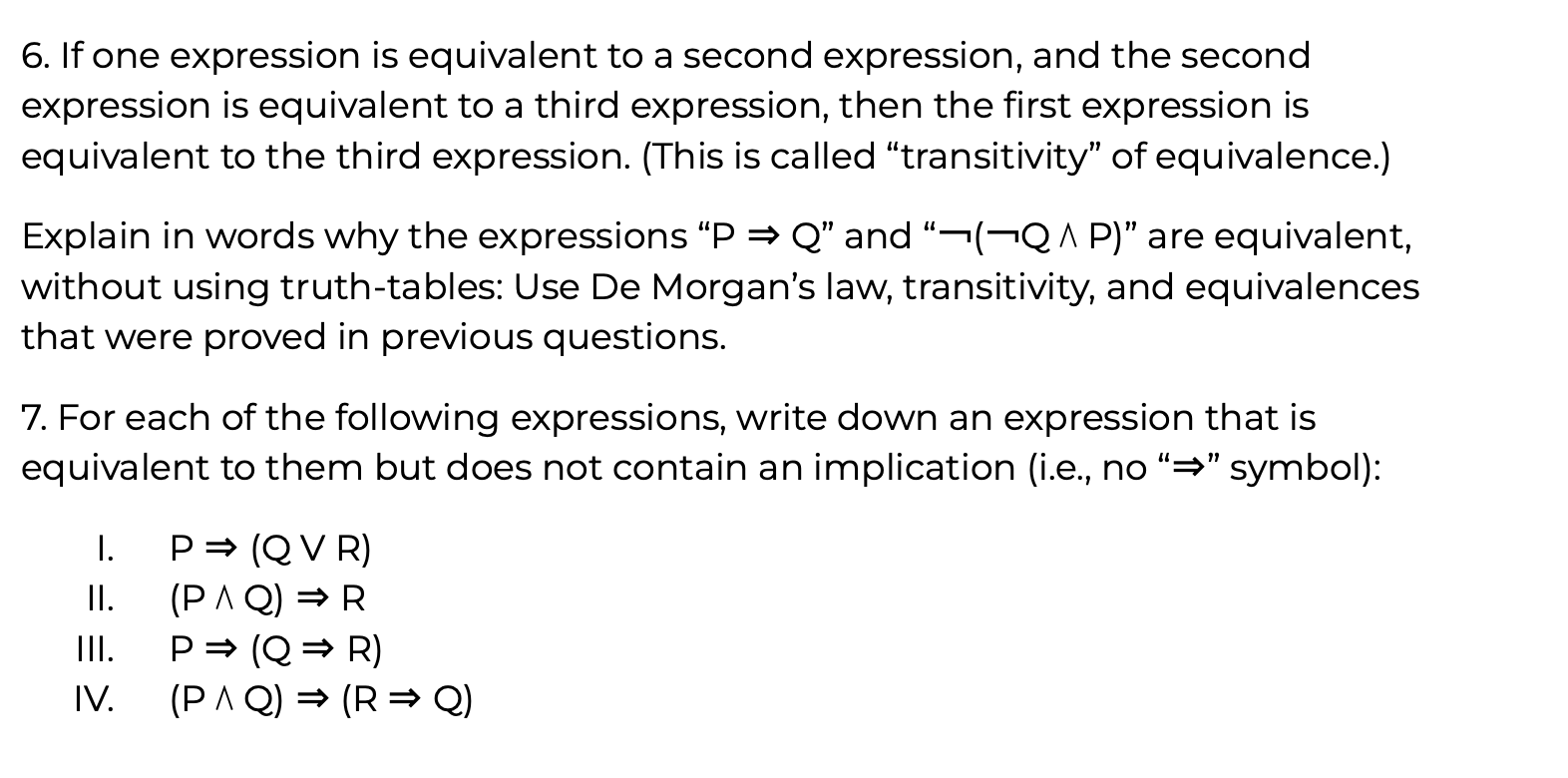Answered step by step
Verified Expert Solution
Question
1 Approved Answer
If one expression is equivalent to a second expression, and the second expression is equivalent to a third expression, then the first expression is equivalent
If one expression is equivalent to a second expression, and the second
expression is equivalent to a third expression, then the first expression is
equivalent to the third expression. This is called "transitivity" of equivalence.
Explain in words why the expressions and not are equivalent,
without using truthtables: Use De Morgan's law, transitivity, and equivalences
that were proved in previous questions.
For each of the following expressions, write down an expression that is
equivalent to them but does not contain an implication ie no symbol:
I.
II
III.
IV

Step by Step Solution
There are 3 Steps involved in it
Step: 1

Get Instant Access to Expert-Tailored Solutions
See step-by-step solutions with expert insights and AI powered tools for academic success
Step: 2

Step: 3

Ace Your Homework with AI
Get the answers you need in no time with our AI-driven, step-by-step assistance
Get Started


